Our Legacy of Safety
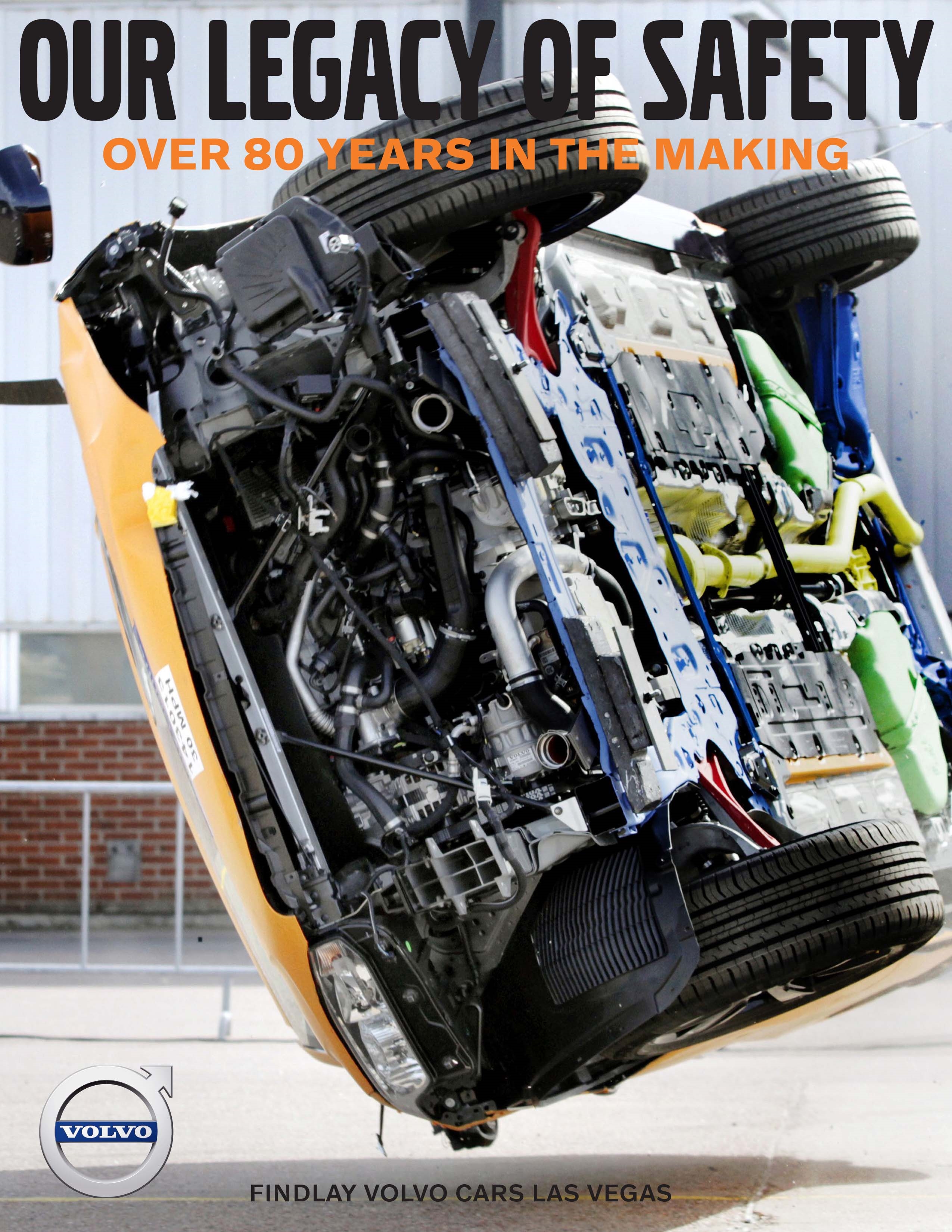

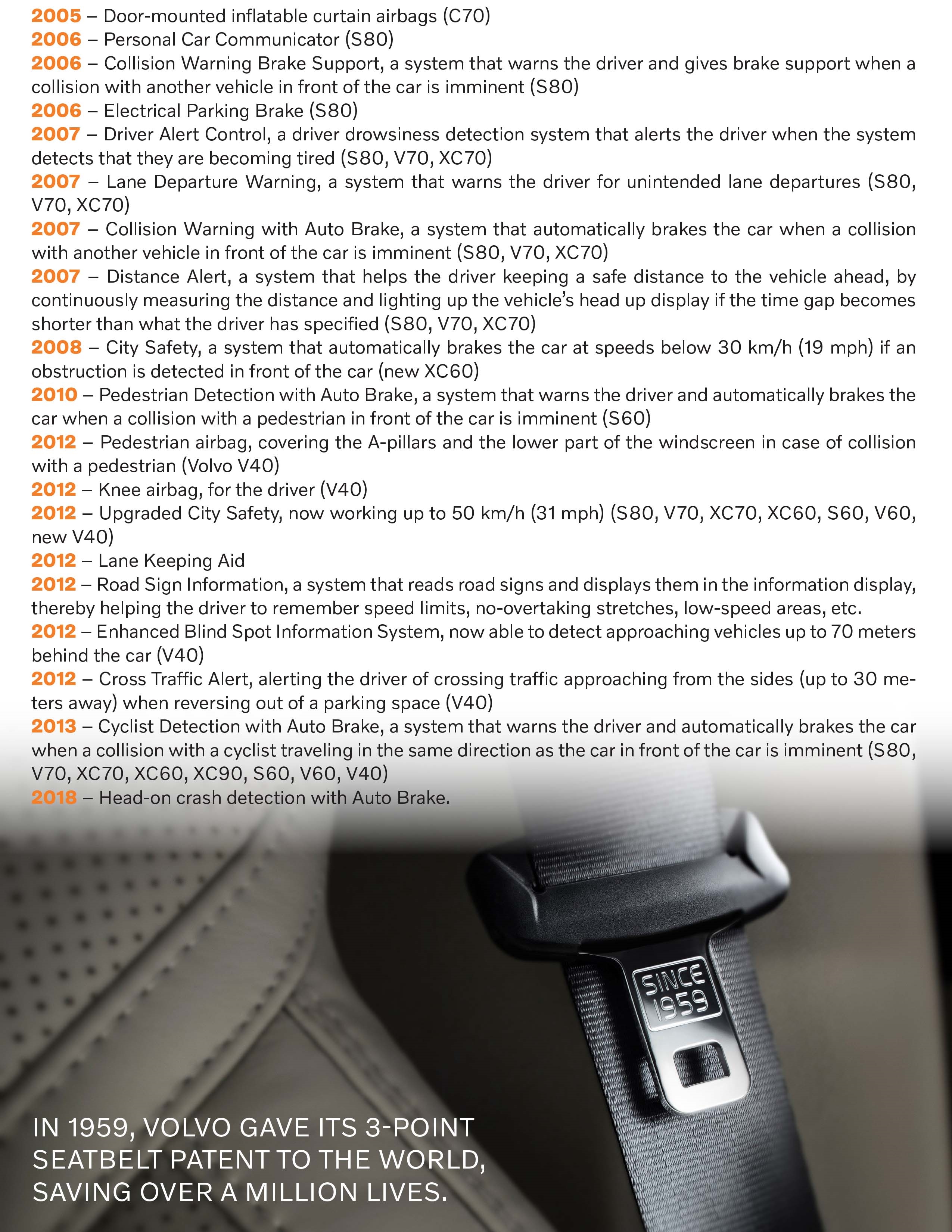
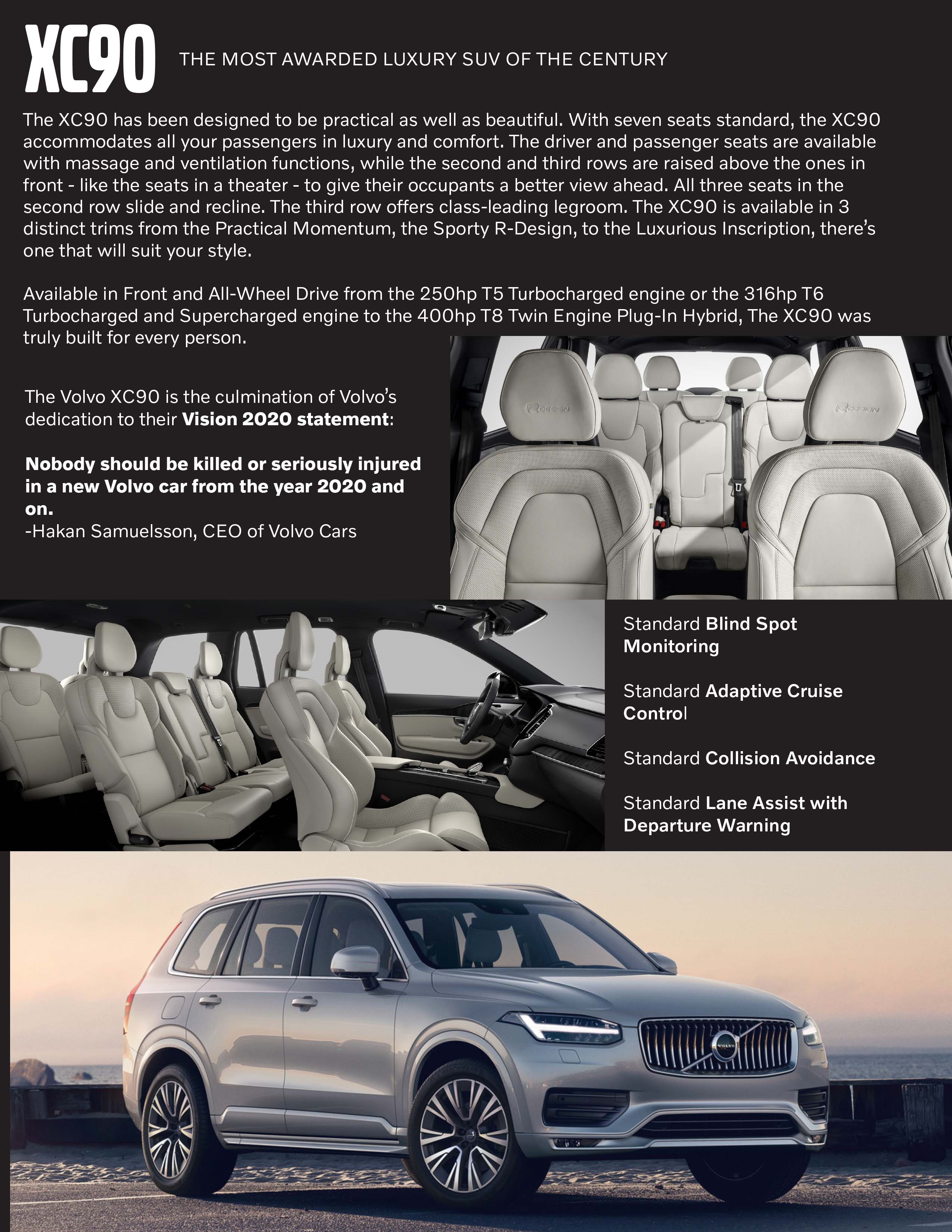
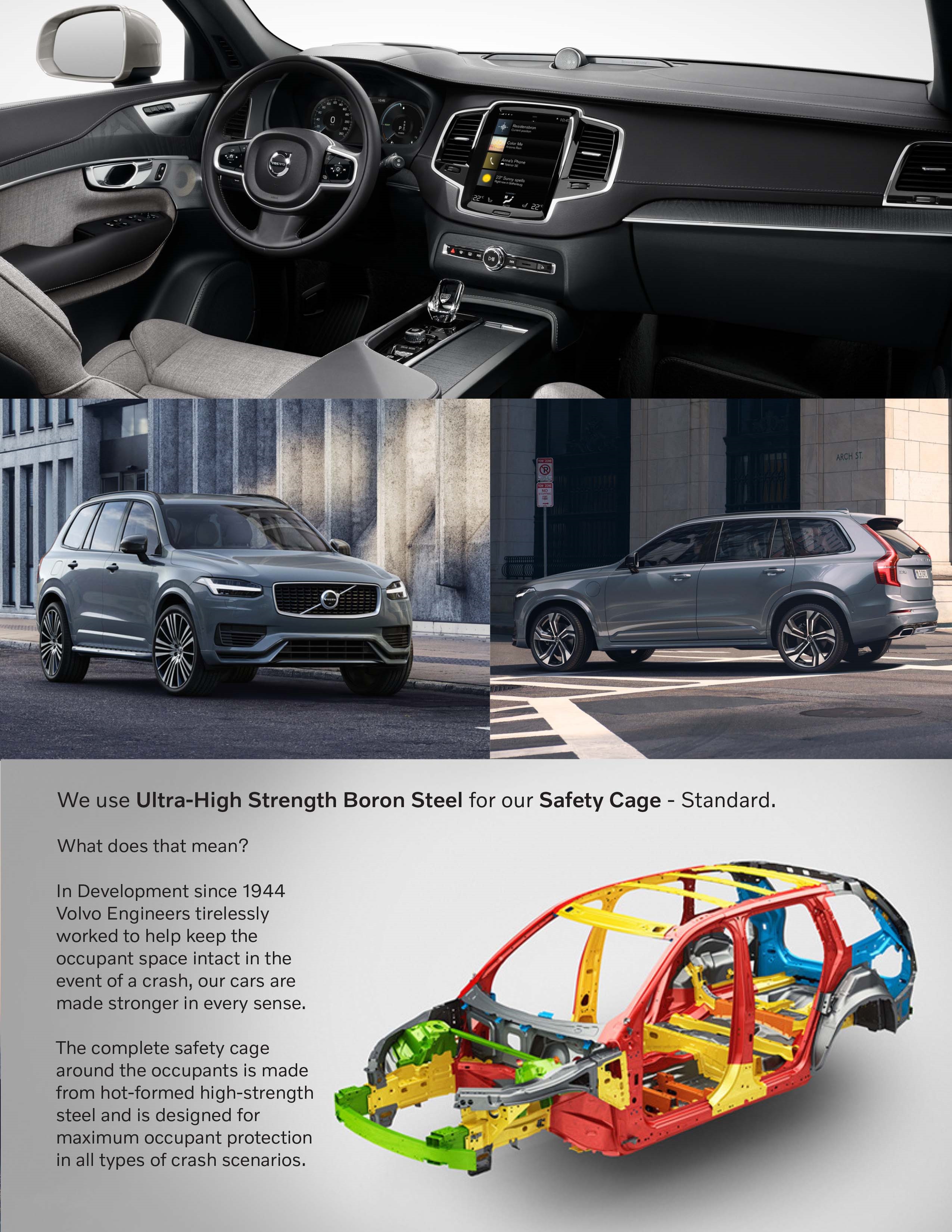

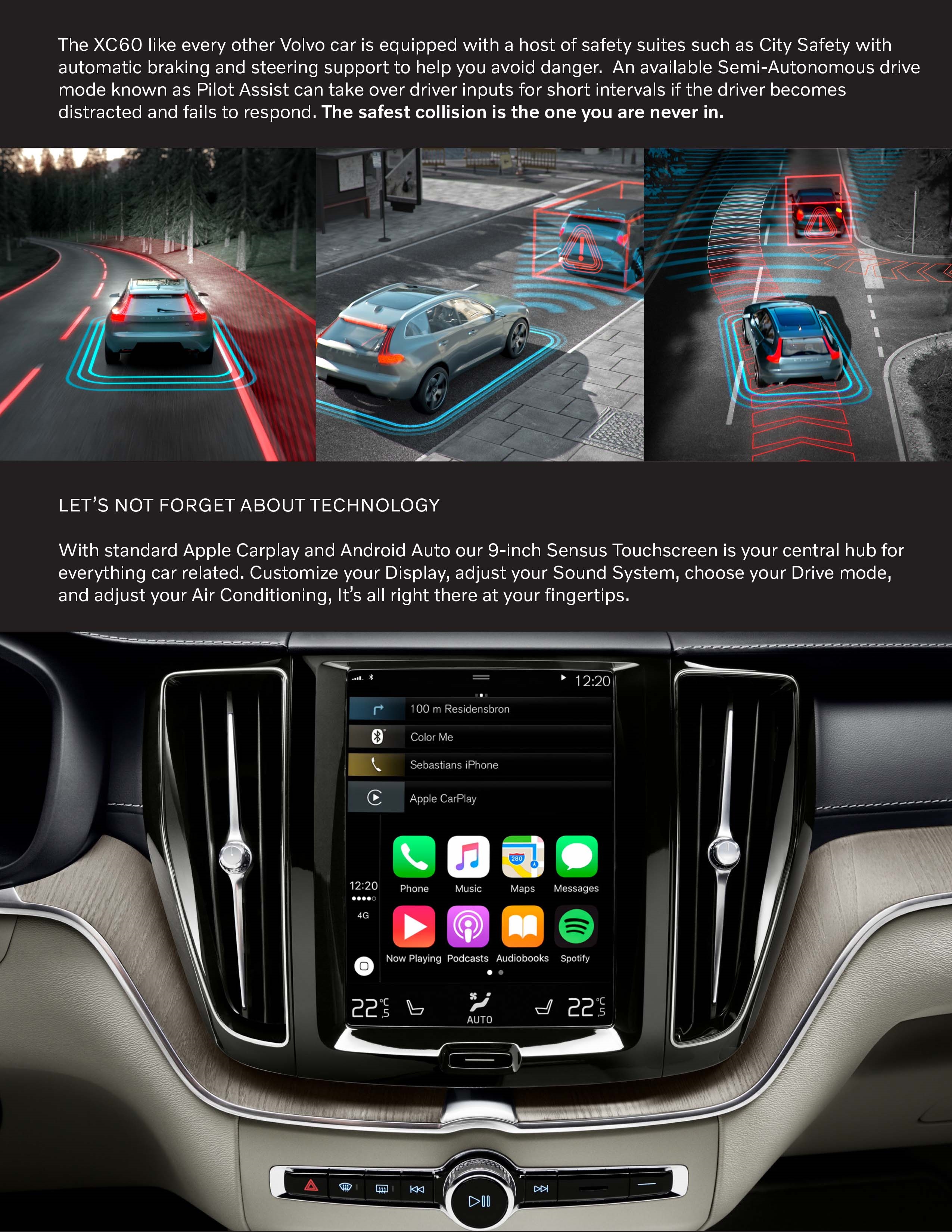
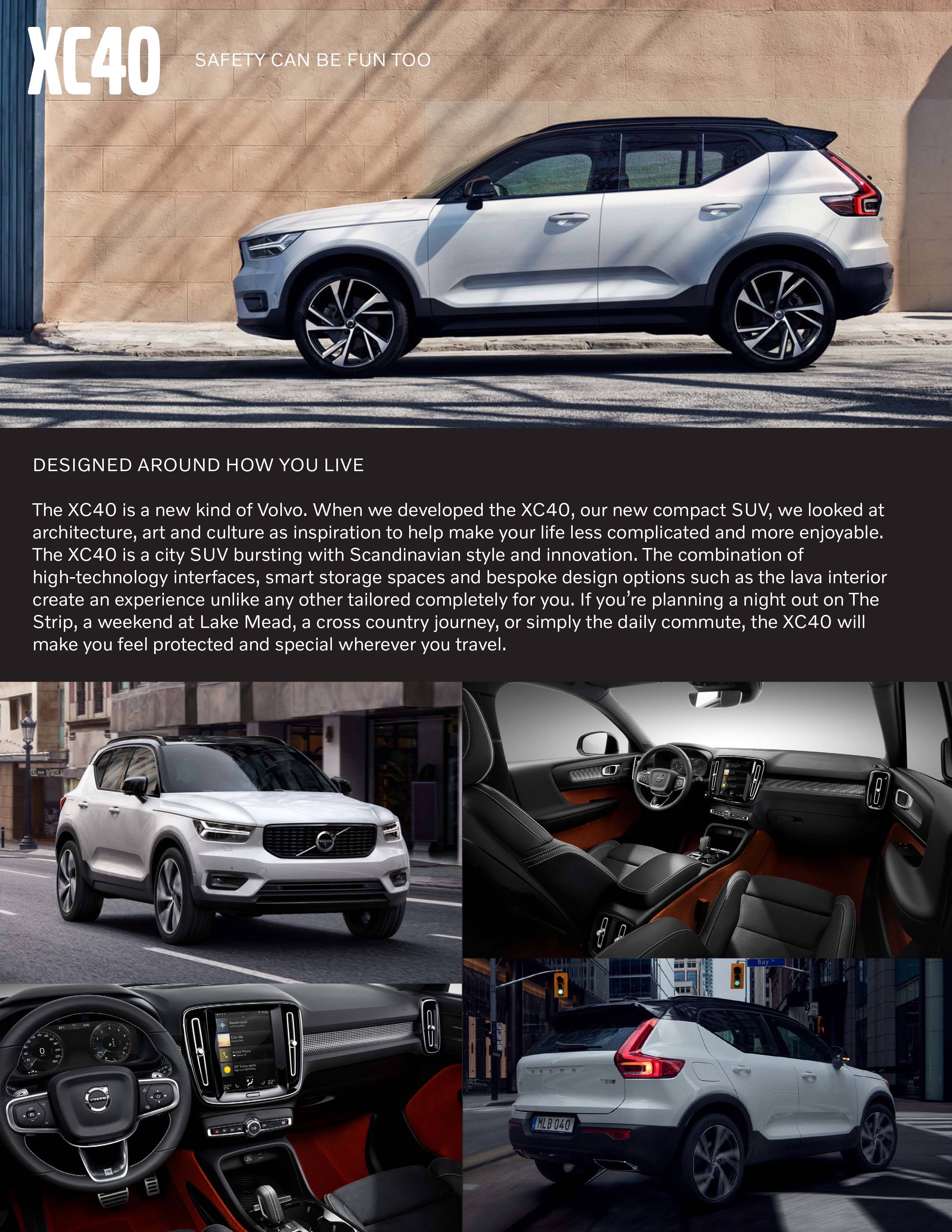
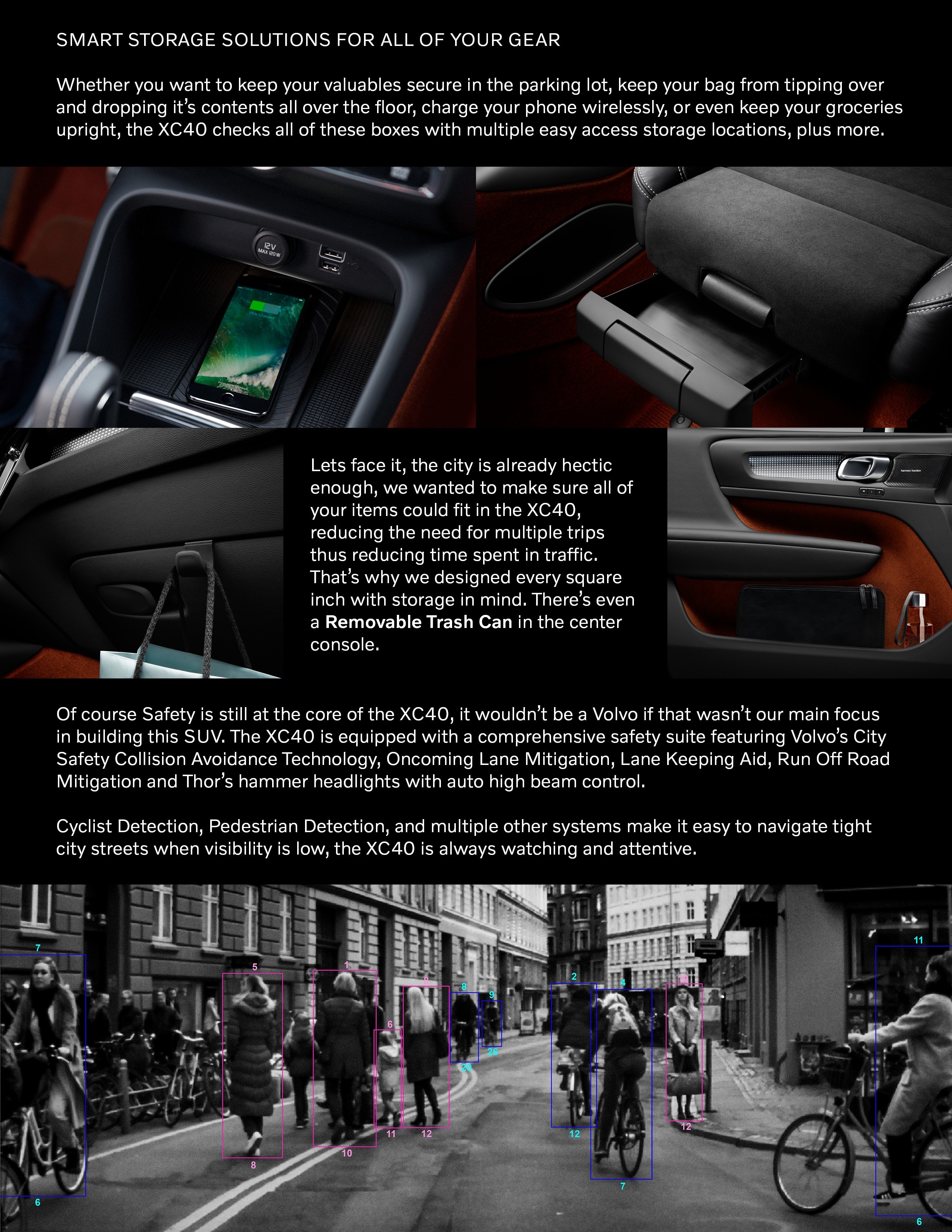

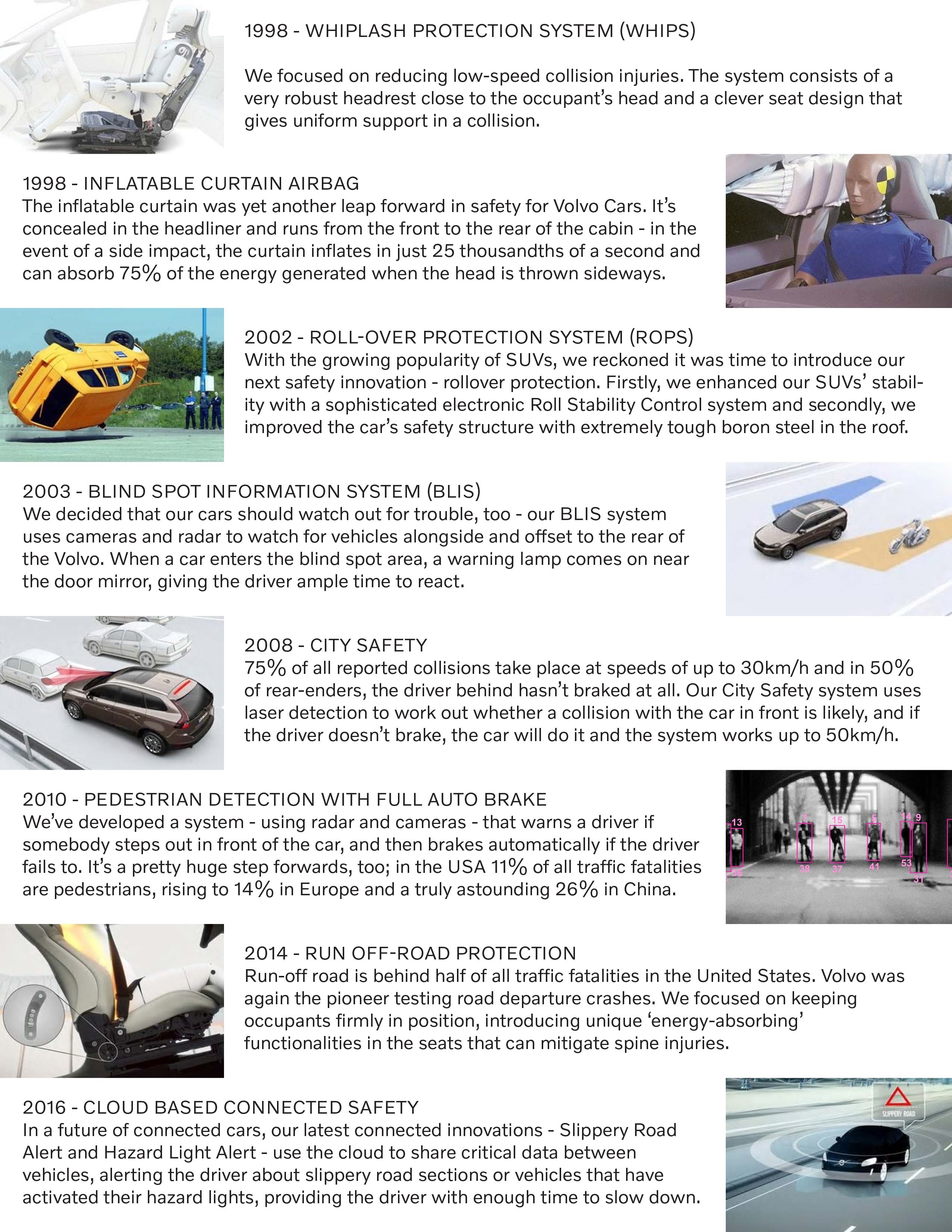

OUR HISTORY OF INNOVATION
In every generation, Volvo has been a pioneer
1959 - Three-point Safety Belt
There can be few men on the planet who have saved as many lives as Volvo engineer Nils Bohlin - he introduced three-point seatbelts into the series production PV544. Since then, it's estimated that over one million lives have been saved as a result of Volvo Cars waiving its patent rights so everybody could benefit.
1972 - Rearward-facing Child Safety Seat
Remember those early images of astronauts lying on their backs during take-off to even out the forces? Well, that was the basic principle behind our rearward-facing child seats, to spread the load and minimise injury. Then we innovated in 1976 with the child booster seat and again in 1990 with an integrated booster built right into the seat.
1976 - Lambda Sond
The Lambda Sond was yet another contribution to a cleaner environment from Volvo Cars. A little device the size of a finger - actually, it's an oxygen-sensing probe - meant that we reduced harmful exhaust emissions by 90%. And nearly 40 years on virtually every petrol-engine car in the world has a Lambda Sond fitted.
1991 - Side Impact Protection
Another major step forward for safety came with our Side Impact Protection System, or SIPS. This was an integral part of the car's design and included a very strong structure and energy-absorbing materials on the inside, a cross member in the floor and even reinforced seats. We followed that up in 1994 with another world first, side-impact airbags.
1998 - Whiplash Protection System
Whiplash is a painful and potentially expensive injury. It's also quite common, so we focused on reducing low-speed collision injuries. The system consists of a very robust headrest close to the occupant's head and a clever seat design that gives uniform support in a collision. The result is that the risk of long-term medical problems are half what they were.
1998 - Inflatable Curtain
The inflatable curtain was yet another leap forward in safety for Volvo Cars. It's concealed in the headliner and runs from the front to the rear of the cabin - in the event of a side impact, the curtain inflates in just 25 thousandths of a second and can absorb 75% of the energy generated when the head is thrown sideways.
2002 - Roll-Over Protection System (ROPS)
With the growing popularity of SUVs, we reckoned it was time to introduce our next safety innovation - rollover protection. We tackled the problem from two directions. Firstly, we enhanced our SUVs' stability with a sophisticated electronic Roll Stability Control system and secondly, we improved the car's safety structure with extremely tough boron steel in the roof.
2003 - Blind Spot Information System (BLIS)
When drivers change lanes, a moment's inattention can have catastrophic consequences if the driver hasn't spotted another car in the blind spot. So we decided that our cars would watch out for trouble, too - our BLIS system uses cameras and radar to watch for vehicles alongside and offset to the rear of the Volvo. When a car enters the blind spot area, a warning lamp comes on near the door mirror, giving the driver ample time to react.
2008 - City Safety
Here are some amazing statistics - 75% of all reported collisions take place at speeds of up to 30km/h and in 50% of rear-enders, the driver behind hasn't braked at all. We saw an opportunity to make a great difference - our City Safety system uses laser detection to work out whether a collision with the car in front is likely, and if the driver doesn't brake, the car will do it. And the system works up to 50km/h.
2010 - Pedestrian Detection with Full Auto Brake
We want our safety innovations to benefit those outside our cars, too. So we've developed a system - using radar and cameras - that warns a driver if somebody steps out in front of the car, and then brakes automatically if the driver fails to. It's a pretty huge step forwards, too; in the USA 11% of all traffic fatalities are pedestrians, rising to 14% in Europe and a truly astounding 26% in China.
2014 - Run-off Road Protection
Run-off road is behind half of all traffic fatalities in the United States. Volvo was again the pioneer testing road departure crashes - often the result of fatigue, poor weather conditions or a lack of driver's attention. We focused on keeping occupants firmly in position, introducing unique 'energy-absorbing' functionalities in the seats that can mitigate spine injuries.
2016 - Connected Safety
Volvo Cars is defining a completely new type of road safety system in a world of connected cars. Our latest connected innovations - Slippery Road Alert and Hazard Light Alert - use the cloud to share critical data between vehicles, alerting the driver about slippery road sections or vehicles that have activated their hazard lights - providing the driver with enough time to slow down.
Our Complete Timeline So Far
- 1944 - safety cage
- 1944 - laminated windscreen
- 1957 - anchor points for two-point safety belts, front
- 1958 - anchor points for two-point safety belts, rear
- 1959 - three-point safety belt, standard in front seats
- 1964 - rearward-facing child safety seat, first prototype tested
- 1966 - crumple zones front and rear
- 1966 - safety door-locks
- 1969 - inertia-reel safety belts
- 1971 - reminder safety belt
- 1972 - three-point safety belt, outer rear seats
- 1972 - rearward-facing child safety seat
- 1974 - multistage impact absorbing steering column
- 1974 - bulb integrity sensor
- 1975 - braking system with stepped bore master cylinder
- 1978 - child safety booster cushion
- 1982 - "anti-submarining" protection
- 1986 - three-point safety belt in centre rear seat (740/760)
- 1990 - integrated child safety cushion in centre rear seat (940/960)
- 1991 - Side Impact Protection System (850 and 940/960)
- 1991 - automatic height adjusting safety belt
- 1992 - reinforced rear seats, estate models
- 1995 - front side airbags (seat-mounted) for torso (850), integrated child safety cushion, outer rear seats
- 1997 - Roll Over Protection System (C70)
- 1998 - Whiplash Protection System (S80)
- 1998 - roof-mounted inflatable curtain side airbags (S80)
- 2001 - SCC : Volvo Safety Concept Car
- 2002 - Roll Stability Control (XC90)
- 2003 - Volvo Intelligent Vehicle Architecture, new front structure (S40, V50)
- 2003 - rear seat belt reminders (S40, V50)
- 2003 - Intelligent Driver Information System, a system that selectively blocks information to the driver in complex traffic situations and lets the information through once the situation has calmed down (S40, V50)
- 2003 - Volvo's Traffic Accident Research Team, inaugurated in Bangkok
- 2004 - Blind Spot Information System, informs the driver of vehicles in the blind spots, using a yellow LED in the A-pillars (S40, V50)
- 2005 - door-mounted inflatable curtain airbags (C70)
- 2006 - Personal Car Communicator (S80)
- 2006 - Collision Warning Brake Support, a system that warns the driver and gives brake support when a collision with another vehicle in front of the car is imminent (S80)
- 2006 - Electrical Parking Brake (S80)
- 2007 - Driver Alert Control, a driver drowsiness detection system that alerts the driver when the system detects that they are becoming tired (S80, V70, XC70)
- 2007 - Lane Departure Warning, a system that warns the driver for unintended lane departures (S80, V70, XC70)
- 2007 - Collision Warning with Auto Brake, a system that automatically brakes the car when a collision with another vehicle in front of the car is imminent (S80, V70, XC70)
- 2007 - Distance Alert, a system that helps the driver keeping a safe distance to the vehicle ahead, by continuously measuring the distance and lighting up the vehicle's head up display if the time gap becomes shorter than what the driver has specified (S80, V70, XC70)
- 2007 - Alcoguard, a hand-held device that the driver blows into before they can start the car, mainly aimed for the company-car sector, taxi operators, state authorities and municipalities (S80, V70, XC70)
- 2008 - City Safety, a system that automatically brakes the car at speeds below 30 km/h (19 mph) if an obstruction is detected in front of the car (new XC60)
- 2010 - Pedestrian Detection with Auto Brake, a system that warns the driver and automatically brakes the car when a collision with a pedestrian in front of the car is imminent (S60)
- 2012 - pedestrian airbag, covering the A-pillars and the lower part of the windscreen in case of collision with a pedestrian (Volvo V40)
- 2012 - knee airbag, for the driver (V40)
- 2012 - Upgraded City Safety, now working up to 50 km/h (31 mph) (S80, V70, XC70, XC60, S60, V60, new V40)
- 2012 - Lane Keeping Aid, a system that steers the car back into the lane again if it is about to unintentionally drift out of the lane (V40)
- 2012 - Road Sign Information, a system that reads road signs and displays them in the information display, thereby helping the driver to remember speed limits, no-overtaking stretches, low-speed areas, etc. (S80, V70, XC70, XC60, S60, V60, V40)
- 2012 - Enhanced Blind Spot Information System, now able to detect approaching vehicles up to 70 meters behind the car (V40)
- 2012 - Cross Traffic Alert, alerting the driver of crossing traffic approaching from the sides (up to 30 meters away) when reversing out of a parking space (V40)
- 2013 - Cyclist Detection with Auto Brake, a system that warns the driver and automatically brakes the car when a collision with a cyclist travelling in the same direction as the car in front of the car is imminent (S80, V70, XC70, XC60, XC90, S60, V60, V40)
- 2018 - Head-on crash detection with Auto Brake.